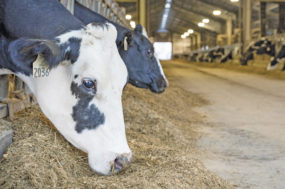We tend to only notice the employees who quit with one day’s notice, who don’t follow procedures or those who leave the workplace without completing all the tasks assigned.
But what if we pause for a moment and focus on the employees who show up every day, get the job done and are reliable and honest.
In the early stages of my career, I learned a very basic principle of milking cows: “Milk clean, dry and well-stimulated teats.” Throughout the years, I also learned it is one of the most difficult things to implement for many farms. Why is it more difficult for some farms than others?
In a depressed dairy market, many producers in the industry have been forced to adapt in a short period of time. One example is: Many producers were forced to milk more cows in the same facilities with the same number of operators. By making this change, some milking procedures and routines were not able to match the new flow of cows, making it impossible to follow “milk clean, dry, well-stimulated teats.” Some adjustments are needed to the milking routine in order to get the job done.
In a similar situation, where some farms went from a period of daily downtime in their parlors to a full 24-hour milking schedule, they also struggled to milk clean, dry, well-stimulated teats. In addition, the frequency of preventive maintenances to service the milking parlor fall short, creating a different series of problems considering there is more wear and tear milking 24 hours a day.
A more common scenario as to why some farms struggle to milk clean, dry, stimulated teats is the level of understanding of what that really means when we are milking cows. Are we really challenging people with meaningful work, or are we just creating busy work?
In many instances, we confuse effective communication with a language barrier. The language barrier can be a bridge in many ways, but the real question is if the right message is getting delivered to the right people and how people are understanding the message.
Mixed messages or unclear expectations don’t bring the best consistency in milking procedures. When employees get told they are not doing milking procedures correctly, they feel reprimanded and frustrated, and good people leave.
Farms who don’t struggle with implementing proper milking protocols invest the time to be in contact with their employees in many ways.
- They make the time to meet with employees and talk about expectations, challenges and new initiatives.
- Employees are welcome and open to discuss topics during the meeting.
- Employees are also responsible for the outcome of certain tasks during the milking shifts, and someone on the farm makes weekly milking observations to make necessary corrections to milking protocols.
- Employees are also regularly informed about performance results like bacteria count and somatic cells in the milk.
All the above-mentioned items are an ongoing process that doesn’t stop. This process is part of the many routines of the farm just like milking cows. For the most part, these farms have a higher employee retention rate.
If you are struggling with your staff, have a high employee turnover rate, or you get drained from working with employee issues and find yourself avoiding the issues, don’t beat yourself up. There are many resources available in the dairy industry to help you get through and solve these issues. Those resources can also help you learn, grow and align your work to your natural talents. ![]()

-
Mario Solis Flores
- Technical Service Specialist
- Form-A-Feed
- Email Mario Solis Flores








